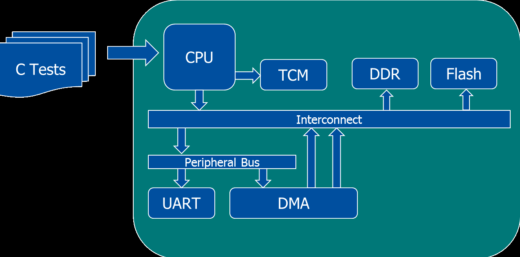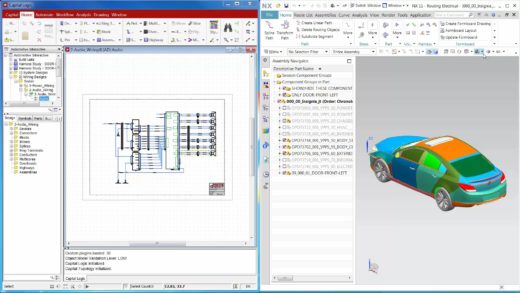Article Roundup: Self-Correcting Automotive ICs, Machine Learning, Portable Stimulus, ECAD-MCAD Co-Design & Debug Triage
- Mentor Tessent MissionMode Provides Runtime DFT for Self-Correcting Automotive ICs
- Machine Learning’s Growing Divide
- Portable stimulus smooths path to SW-driven verification, eliminates duplication
- ECAD-MCAD Co-Design Promotes Automotive First-Pass Success
- Triage without tears: improving debug’s most human challenge
Mentor Tessent MissionMode Provides Runtime DFT for Self-Correcting Automotive ICs
SemiWiki
 Automotive ICs are getting smarter as they increase in complexity and function. These new chips can self-diagnose errors, communicate them to the driver, and even repair the errors themselves. With the latest in design-for-test technology, automotive ICs are covered for the lifetime of the vehicle.
Automotive ICs are getting smarter as they increase in complexity and function. These new chips can self-diagnose errors, communicate them to the driver, and even repair the errors themselves. With the latest in design-for-test technology, automotive ICs are covered for the lifetime of the vehicle.
Machine Learning’s Growing Divide
SemiEngineering
Machine learning is a highly active area of development, but this development has focused on the cloud, algorithms, and GPUs. What this development has not considered is how to package the technology into usable forms, such as in cars or IoT edge devices. While software continues to advance in sophistication and functionality, the hardware used to run it remains constrained by throughput, power, and future-proofing requirements.
Portable stimulus smooths path to SW-driven verification, eliminates duplication
EDN Network
 Processors are an increasingly common feature of SoC designs, causing verification to cover hardware, software, and their various interactions. A step-wise approach to verification using portable stimuli identifies bugs earlier in the design process, and can be easily redirected for multiple test environments such as functional, emulation and device characterization. This method provides early, comprehensive verification without duplicated effort.
Processors are an increasingly common feature of SoC designs, causing verification to cover hardware, software, and their various interactions. A step-wise approach to verification using portable stimuli identifies bugs earlier in the design process, and can be easily redirected for multiple test environments such as functional, emulation and device characterization. This method provides early, comprehensive verification without duplicated effort.
ECAD-MCAD Co-Design Promotes Automotive First-Pass Success
SemiEngineering
 ECAD-MCAD co-design has long been recognized as a potential enabler to increasing productivity and ensuring a robust design. Until now, the electrical and mechanical domains had to integrate through email, spreadsheets, XML files, and brute force. With modern CAD tools designers are able to synchronize their data more efficiently and collaborate more effectively on critical design items between domains, thereby ensuring that the design intent is properly implemented.
ECAD-MCAD co-design has long been recognized as a potential enabler to increasing productivity and ensuring a robust design. Until now, the electrical and mechanical domains had to integrate through email, spreadsheets, XML files, and brute force. With modern CAD tools designers are able to synchronize their data more efficiently and collaborate more effectively on critical design items between domains, thereby ensuring that the design intent is properly implemented.
Triage without tears: improving debug’s most human challenge
TechDesign Forum
 The complexity of design and verification of modern ICs has simultaneously increased the challenge of triage – the process of analyzing, categorizing, prioritizing and assigning debug tasks. This article presents characteristics of four types of triage tasks, and a subsequent set of models for improving them.
The complexity of design and verification of modern ICs has simultaneously increased the challenge of triage – the process of analyzing, categorizing, prioritizing and assigning debug tasks. This article presents characteristics of four types of triage tasks, and a subsequent set of models for improving them.
